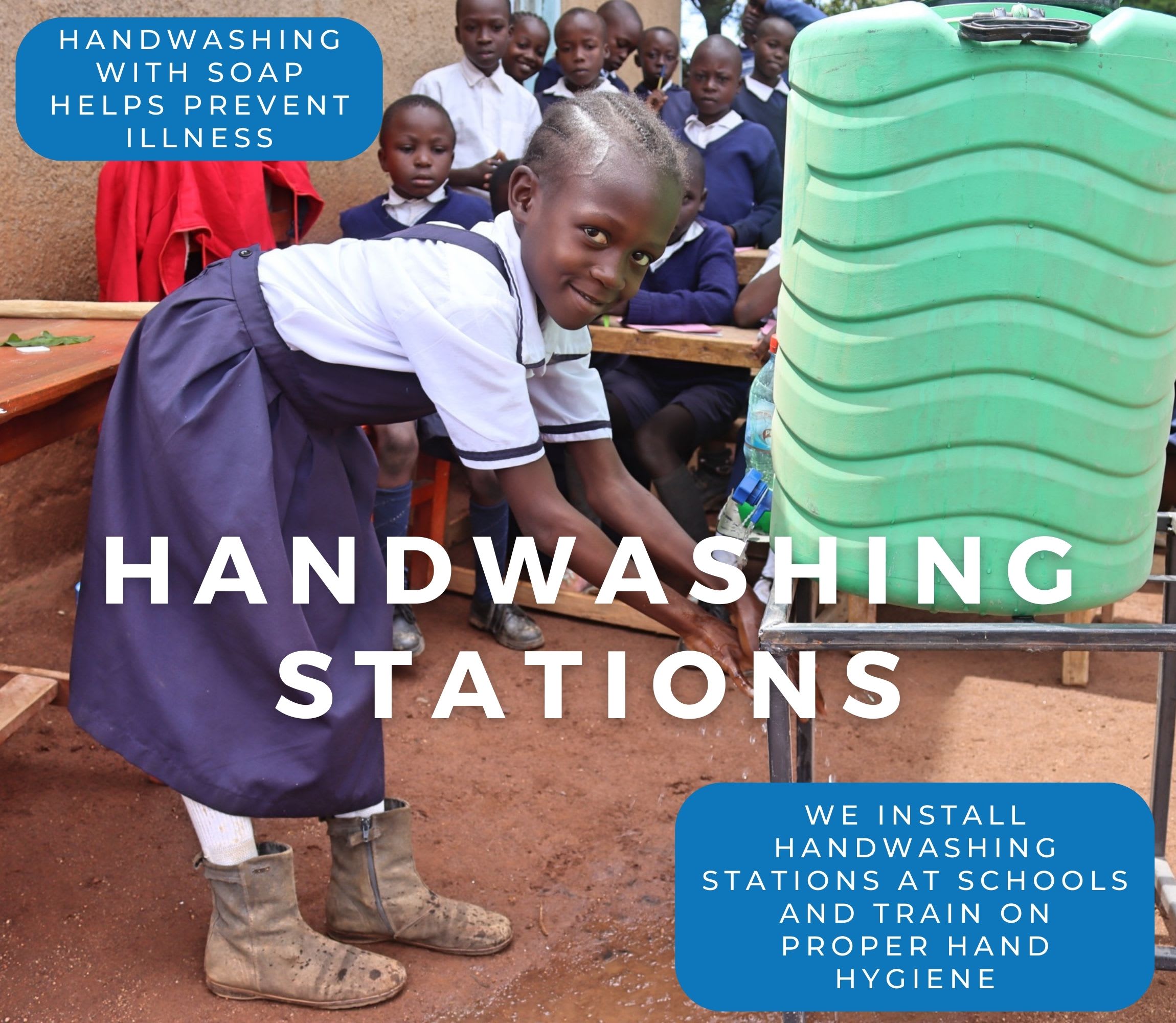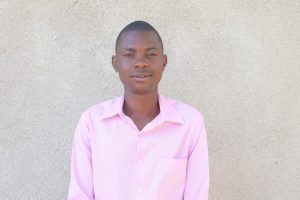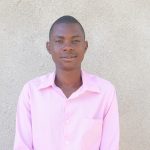Likindu Health Center plays a vital role in caring for its community. It is a fully operational health center with 21 staff members who provide care for around 80 outpatients and five inpatients each day.
Ironically, those in need of medical care are often suffering from waterborne diseases—painful stomach illnesses caused by contaminated water—because their community has no safe or reliable source to turn to.

The river where water is collected.
The health center is not immune to the water crisis. The facility mainly depends on rainwater collected in tanks. While this water is kept clean, it often runs out during dry seasons.
When that happens, the staff must find alternative solutions. Most often, that means collecting water from the local river for cleaning, but then they must use a large portion of their meager budget to pay someone to collect water that people can drink from other sources. This lack of certainty means that the water may not be clean, which in turn puts the staff and patients at risk.
"I need water for everything I do. At the hospital, we need it to mix medicine, wash, and clean. Water supports life," declared 29-year-old staff member Nurse Brenda Nangendo.

Nurse Brenda Nangendo.
"We depend heavily on rainwater. Drought is the major contributor [to the] lack of water in the facility. We lack sufficient alternative sources of water, like piped water or wells, in the facility and around the community. The available sources of water, like rivers, are contaminated by human activities," she continued.
We asked Brenda how the lack of water impacts her patients and their families, who are responsible for helping to care for them while at the clinic.
"Their stay here while nursing their loved ones is disturbed by [a] lack of enough water in the wards available on taps," Brenda said.
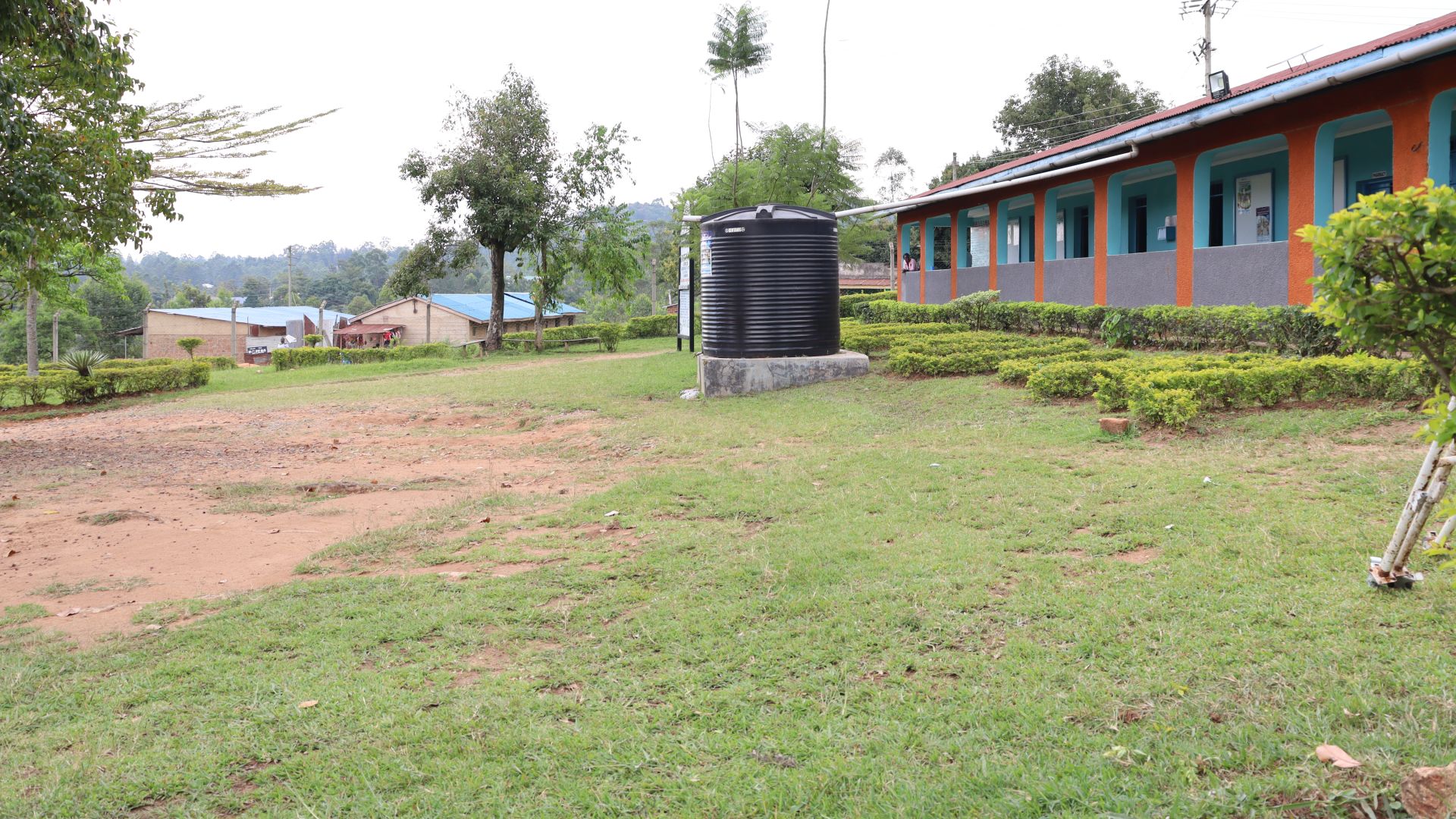
The health center and rain tank.
The lack of clean water makes life difficult for everyone. The health center can't maintain hygiene, clean equipment, prepare food, and provide care for patients, and family members cannot help their loved ones.
A clean and reliable water source would change everything. The proposed borehole would give the center the water it needs to run safely and effectively. It would help staff provide better care, reduce illness, and give the community greater confidence in seeking treatment.
Clean water is essential for health and dignity. For Likindu Health Center and the people it serves, it’s not just about water—it’s about saving lives.
Steps Toward a Solution
For health care settings, immediate access to a large quantity of clean water is crucial for handwashing, sterilization of equipment, cleaning, and safe childbirth. Water that is off-site creates delays, impacts patient care, and increases the risk of hospital-acquired infections.
Our coverage goals aim for all health centers to have an on-premises water source that will sufficiently serve the patients, healthcare providers, and staff to ensure accessibility, reliability, and safety. With more water available, healthcare workers do not have to ration water, worry about purchasing water with their limited funds, or make tough decisions about when to wash their hands or equipment.
Reliable, clean water ensures that healthcare workers have sufficient water so they can provide excellent patient care!
Our technical experts worked with the health center leadership and the local community to identify the most effective solution to their water crisis. They decided to drill a borehole well, construct a platform for the well, and attach a hand pump.
Well
Abundant water often lies just beneath our feet. Aquifers—natural underground rivers—flow through layers of sediment and rock, offering a constant supply of safe water. A borehole well is drilled deep into the earth to access this naturally filtered and protected water. We penetrate meters, sometimes even hundreds of meters, of soil, silt, rock, and more to reach the water underground. Once found, we construct a platform for the well and attach a hand pump. The community gains a safe, enclosed water source capable of providing approximately five gallons of water per minute. Learn more here!
Handwashing Stations
Alongside each water source, we install two gravity-fed handwashing stations, enabling everyone at the health center to wash their hands. Handwashing is crucial for preventing water-related illnesses within the health center and community. Health center staff will maintain the stations, fill them with water, and supply them with soap, which we often teach them how to make.
Latrines
We ensure there are Ventilated Improved Pit (VIP) latrine blocks that effectively prevent the transmission of fecal diseases. Each latrine will boast a durable cement floor for easy use and maintenance. We’ll ensure at least one stall is reserved for staff, along with gender-separated toilets that include menstrual hygiene facilities and accessible options for individuals with limited mobility.
Health Care Staff and Community Education & Ownership
Hygiene and sanitation training are integral to our water projects. Training is tailored to each community's specific needs and includes key topics such as proper water handling, improved hygiene practices, disease transmission prevention, and care of the new water point. Safe water and improved hygiene habits foster a healthier future for everyone in the community.
Encouraged and supported by the guidance of our team, a water user committee representative of the community's diverse members assumes responsibility for maintaining the water point, often gathering fees to ensure its upkeep.
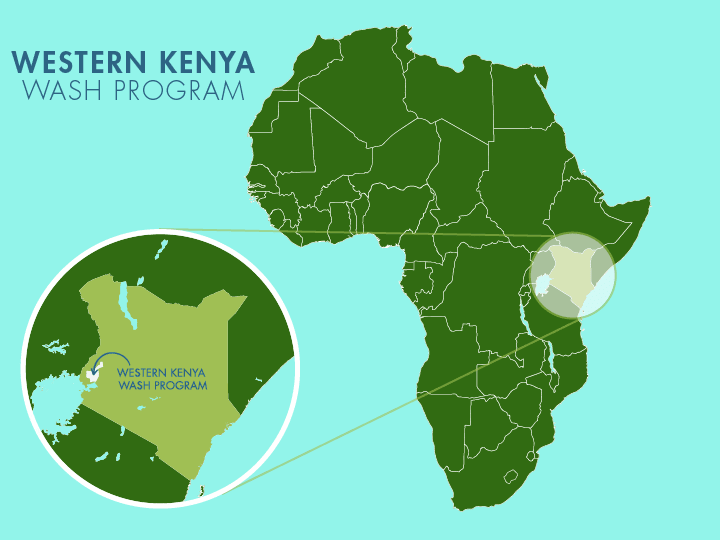
 Borehole Well and Hand Pump
Borehole Well and Hand Pump
 Rehabilitation Project
Rehabilitation Project





